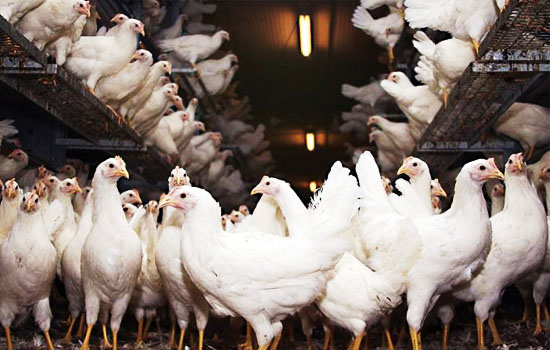Temperature and humidity control of chicken house for laying hen breeding equipment
- font size decrease font size increase font size
(1) Suitable temperature for layer cage system equipment: brooding temperature for egg chicks: 35-33℃ for 1-2 days, 33-32℃ for 3-7 days, and then decrease by about 2 to 3℃ every week, It is about 21-18℃ until 5-6 weeks old. Whether the supplied temperature is appropriate, in addition to observing the thermometer, the behavior of the chicks should also be observed. For example, when the temperature is normal, the chicks are active, have a good appetite, drink moderately, sleep quietly, and have a comfortable sleeping position, mostly lying prone. The chicks are evenly distributed throughout the brooding house; when the temperature is high, the chicks are far away from the heat source and their wings spread out When the temperature is low, the chicks are crowded and close to the heat source, crowded together, trembling, making bursts of cold-phobic noises, and appetite decreases. Chicks are more sensitive to cold and warm, so pay special attention to prevent the temperature from rising and falling, and try your best to keep the temperature balanced. When controlling the temperature, the temperature should be higher at night or in rainy and snowy days; during the day when the chicks are active, the weather should be warmer, and the temperature should be lower; the temperature of weak chicks should be higher, and the temperature of healthy chicks can be lower.

(2) Suitable humidity for layer breeding equipment: Humidity is closely related to the evaporation of water in the chicken body, body heat dissipation and the cleanliness of the chicken house.
① In the high temperature and low humidity, too much water will be lost in the chicken, which will easily cause the chicks to become dehydrated. In addition, due to the dryness, the dust in the house is flying, which can easily induce respiratory diseases.
②At low temperature and high humidity, the house is cold and humid, and the chicks are susceptible to colds, causing wet litter and gastrointestinal diseases and coccidiosis.
③When the temperature is high and humid, the heat in the body of the chicks is not easy to dissipate normally, sulking, decreased appetite, slow growth and weakened resistance. In general,
It is advisable to keep the chicken house dry for chicken layer cage to prevent bacterial reproduction and infection, but the relative humidity should not be lower than 40%. Suitable relative humidity: 60%-65% before 10 days of age, and 50%-60% after 10 days of age. When the humidity is insufficient, water can be sprayed on the corridor, ground, surrounding walls or flue in the house, or a water basin can be put on the heat source to evaporate water vapor to increase the humidity in the house; when the humidity is too high, a moisture-proof layer can be laid on the floor of the chicken house , Properly increase the temperature in the chicken house, strengthen ventilation, change the bedding frequently in the flat chicken house, remove the wet feces and bedding in the house in time, and prevent the drinking fountain from leaking.

